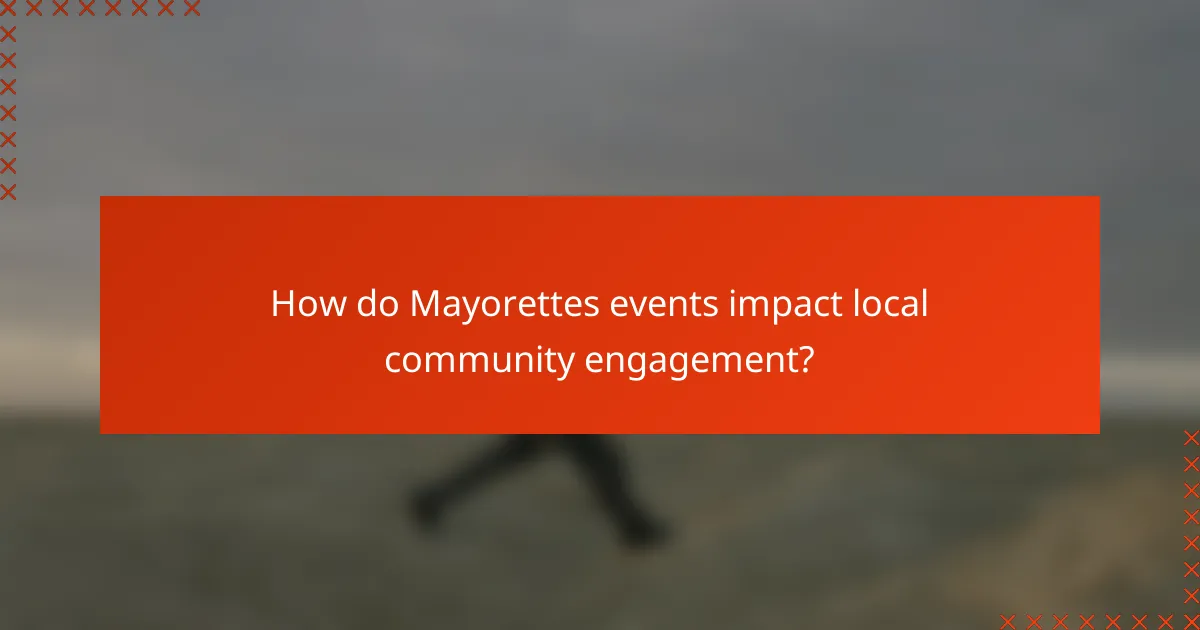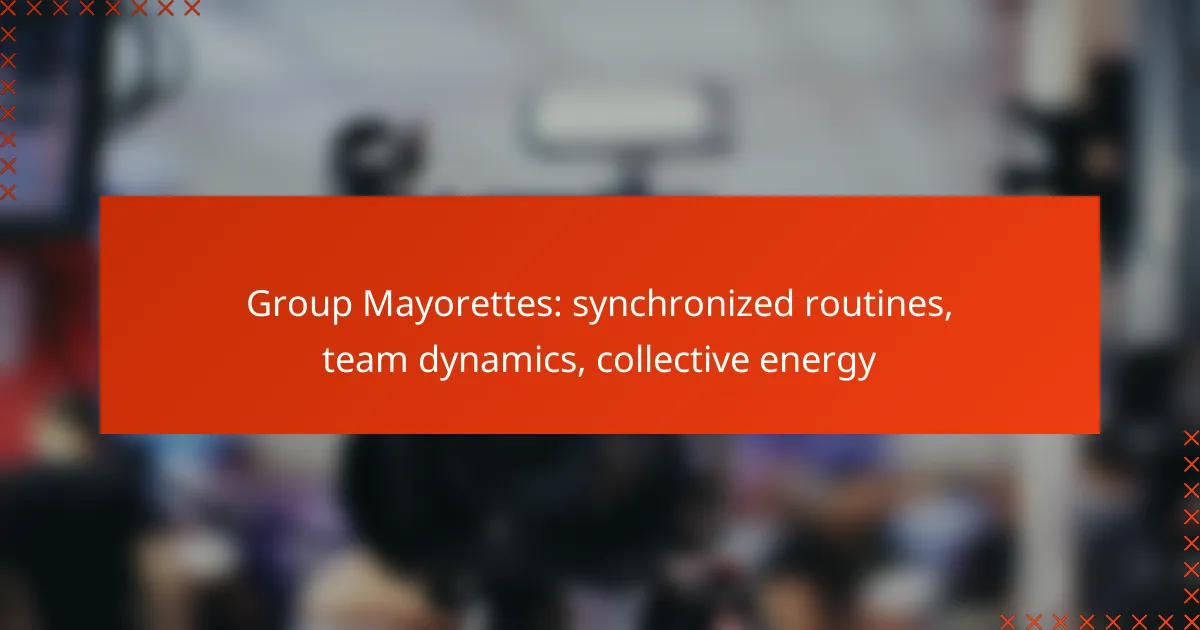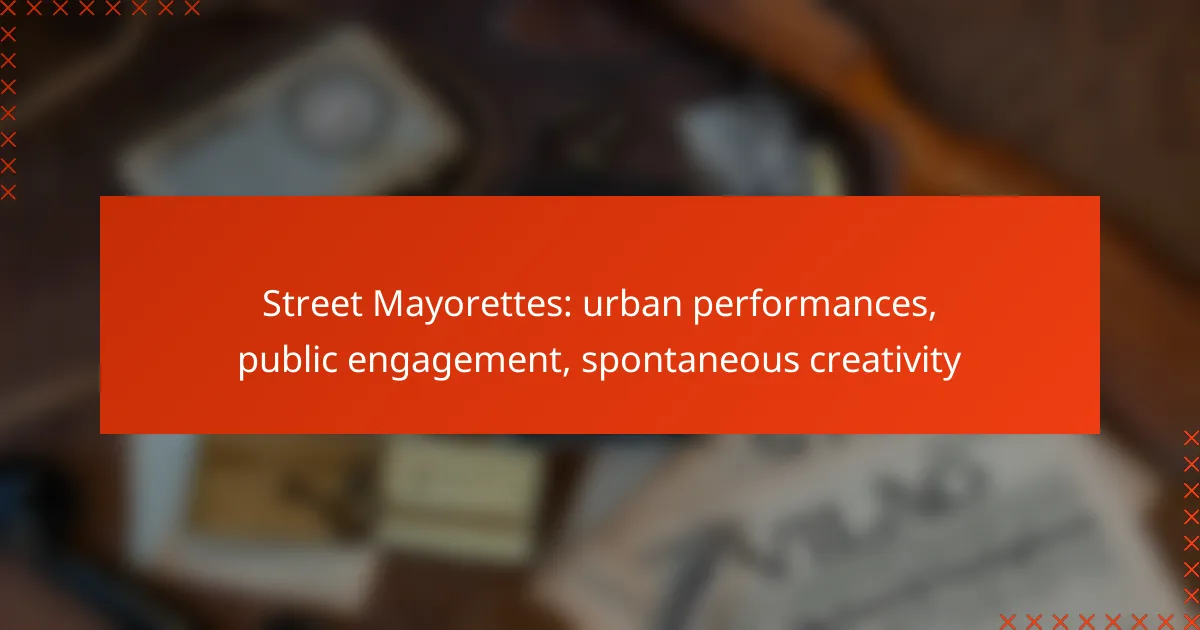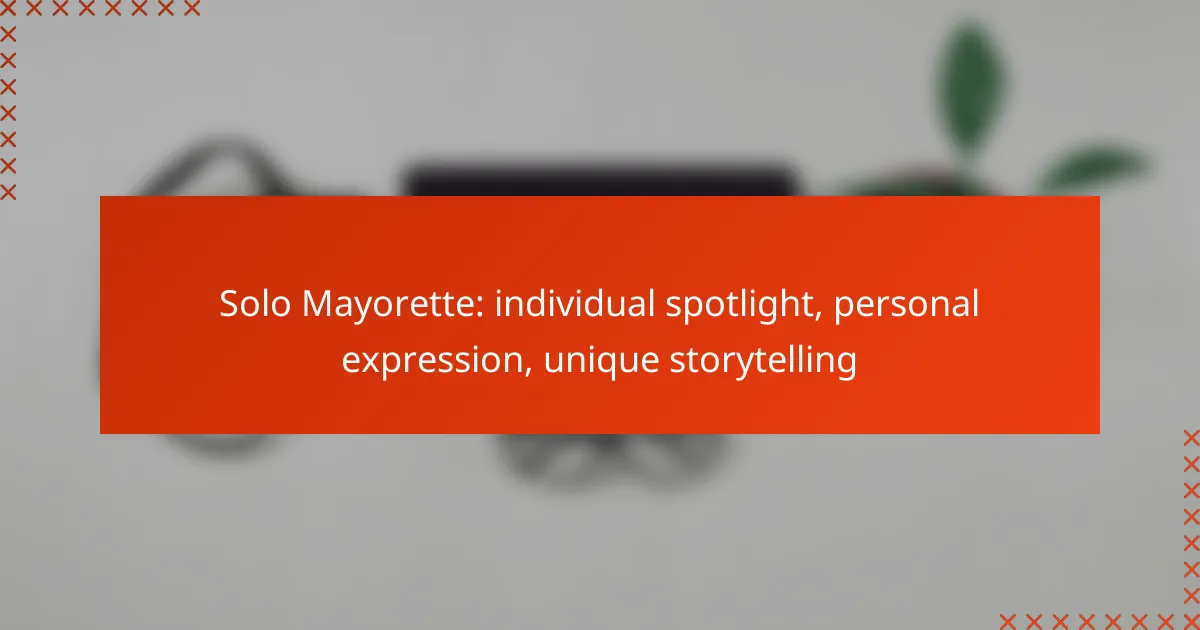Audience reactions play a pivotal role in shaping Mayorettes events in Toronto, providing valuable insights that help organizers understand what captivates spectators and what areas require enhancement. Community involvement is essential for these events’ success, fostering local engagement through sponsorships and volunteer efforts. To ensure continuous improvement, feedback from attendees is gathered through surveys and social media interactions, allowing for a responsive and dynamic event experience.

How do audience reactions shape Mayorettes events in Toronto?
Audience reactions significantly influence Mayorettes events in Toronto by guiding organizers on what resonates with spectators and what needs improvement. Positive feedback can enhance future attendance, while negative responses often lead to necessary changes in programming or execution.
Positive engagement boosts attendance
When spectators express enthusiasm for Mayorettes events, it often translates into higher attendance rates. Engaging performances, interactive activities, and community involvement can create a buzz that attracts more participants. For instance, social media posts showcasing lively moments can amplify interest and draw in larger crowds.
Organizers can foster this positive engagement by incorporating audience suggestions and creating a welcoming atmosphere. Simple strategies like offering incentives for attendees to share their experiences online can further enhance visibility and attendance.
Negative feedback leads to changes
Negative feedback from the audience serves as a critical tool for improvement in Mayorettes events. When attendees voice concerns about aspects such as scheduling, accessibility, or content quality, organizers can take actionable steps to address these issues. For example, if many spectators mention difficulties in accessing venues, future events may consider more central locations or better transportation options.
Collecting feedback through surveys or informal discussions post-event can provide valuable insights. Organizers should prioritize transparency and responsiveness to such feedback, as this not only improves future events but also builds trust within the community.

What community involvement exists in Mayorettes events?
Community involvement in Mayorettes events is crucial for their success, fostering local engagement and support. This participation often manifests through sponsorships from local businesses and the dedication of volunteers who help organize various activities.
Local businesses sponsor activities
Local businesses play a significant role in sponsoring Mayorettes events, providing financial support and resources. This collaboration not only helps cover costs but also enhances the visibility of the businesses within the community.
Common sponsorships include funding for uniforms, equipment, and promotional materials. In return, businesses often receive advertising opportunities, such as their logos displayed at events or mentions in promotional materials, creating a mutually beneficial relationship.
Volunteers assist in organization
Volunteers are the backbone of Mayorettes events, assisting with planning, setup, and execution. Their involvement can range from coordinating logistics to managing activities during the events, ensuring everything runs smoothly.
Community members interested in volunteering can typically sign up through local organizations or directly with the Mayorettes team. Engaging volunteers not only helps lighten the workload but also fosters a sense of community ownership and pride in the events.

How is feedback collected from spectators?
Feedback from spectators is typically collected through various methods designed to capture their experiences and opinions. These methods include surveys distributed during events and active engagement on social media platforms for real-time feedback.
Surveys distributed during events
Surveys are often handed out to spectators during events, allowing them to provide immediate feedback on their experience. These surveys can be paper-based or digital, depending on the event’s resources and setup.
To maximize participation, surveys should be concise, ideally taking no more than a few minutes to complete. Including a mix of multiple-choice questions and open-ended responses can yield both quantitative and qualitative insights.
Social media engagement for real-time feedback
Social media platforms serve as an effective tool for collecting real-time feedback from spectators. By encouraging attendees to share their thoughts and experiences using specific hashtags, organizers can quickly gauge public sentiment.
Engaging with spectators on social media not only fosters community involvement but also allows for immediate responses to any concerns or suggestions. Regularly monitoring these platforms can help organizers adapt and improve future events based on spectator input.

What are the best practices for enhancing audience feedback?
Enhancing audience feedback involves using effective methods to gather insights and opinions from spectators. By implementing digital tools and conducting focus groups, organizers can better understand community involvement and improve future events.
Implementing digital feedback tools
Digital feedback tools, such as online surveys and mobile apps, allow for quick and efficient collection of audience opinions. These platforms can reach a wider audience and provide instant data analysis, making it easier to identify trends and areas for improvement.
When choosing digital tools, consider user-friendliness and accessibility. Aim for platforms that allow for anonymous feedback to encourage honest responses. Offering incentives, like discounts or giveaways, can also boost participation rates.
Conducting post-event focus groups
Post-event focus groups provide a more in-depth understanding of audience reactions and experiences. By gathering a small, diverse group of attendees, organizers can facilitate discussions that reveal nuanced feedback and suggestions for future events.
To conduct effective focus groups, prepare open-ended questions that encourage dialogue. Limit the group size to around 6-10 participants to ensure everyone has a chance to speak. Consider offering refreshments or small stipends to encourage attendance and participation.

How do Mayorettes events impact local community engagement?
Mayorettes events significantly enhance local community engagement by bringing together residents in a shared celebration of culture and civic pride. These events foster connections among participants, encouraging collaboration and active involvement in community initiatives.
Fostering community pride
Mayorettes events serve as a platform for showcasing local talent and traditions, which helps instill a sense of pride among community members. When residents participate in or attend these events, they often feel a stronger connection to their neighborhood and its heritage.
For example, local performances, parades, and exhibitions highlight the unique aspects of the community, making residents more likely to engage in future activities. This pride can lead to increased support for local businesses and initiatives, creating a positive feedback loop for community development.
Encouraging participation in local governance
Mayorettes events can motivate residents to become more involved in local governance by providing a casual setting for discussions about community issues. When people gather to celebrate, they often share ideas and concerns, which can lead to greater civic engagement.
Communities can enhance this effect by incorporating informational booths or forums during events, allowing residents to learn about local governance and how to participate. Encouraging feedback through surveys or suggestion boxes at these events can also help local leaders understand community needs and priorities.

What metrics measure the success of audience involvement?
Success in audience involvement can be measured through various metrics that reflect engagement and satisfaction. Key indicators include attendance figures, demographic insights, and qualitative feedback from participants.
Attendance numbers and demographics
Attendance numbers provide a clear indication of how many people participated in the event, while demographics reveal the characteristics of the audience. For example, tracking age groups, gender, and geographic location can help organizers understand who is engaging with the event.
To effectively analyze attendance, consider using ticket sales data and registration forms. A typical goal might be to achieve a diverse audience, with representation from various age brackets and backgrounds, ideally aiming for at least 30% from underrepresented groups.
Feedback scores and comments analysis
Feedback scores, often collected through surveys, offer quantifiable insights into audience satisfaction. A common approach is to use a scale from 1 to 5, where scores of 4 and above indicate strong approval. Additionally, analyzing open-ended comments can reveal specific areas for improvement.
To gather meaningful feedback, ensure surveys are distributed promptly after the event. Aim for a response rate of at least 20% to obtain a representative sample. Look for recurring themes in comments to identify strengths and weaknesses in the audience experience.

How can future Mayorettes events adapt to audience needs?
Future Mayorettes events can adapt to audience needs by actively seeking feedback and incorporating community suggestions. Engaging with attendees through various channels ensures that the events resonate with diverse interests and cultural backgrounds.
Incorporating diverse cultural elements
To enhance the appeal of Mayorettes events, organizers should include a variety of cultural elements that reflect the community’s diversity. This can involve showcasing local artists, musicians, and culinary traditions, which fosters a sense of belonging among attendees.
Consider hosting workshops or performances that highlight different cultural practices. For instance, integrating traditional dance or music from various ethnic groups can create a richer experience and encourage wider participation.
Utilizing technology for enhanced experiences
Leveraging technology can significantly improve audience engagement at Mayorettes events. Tools such as mobile apps for event schedules, interactive maps, and live polling can provide attendees with real-time information and opportunities to share their opinions.
Additionally, consider using social media platforms to gather feedback during and after the events. This can help organizers understand audience preferences and make informed decisions for future gatherings. Simple surveys or QR codes linking to feedback forms can streamline this process.



